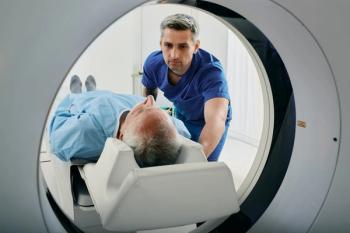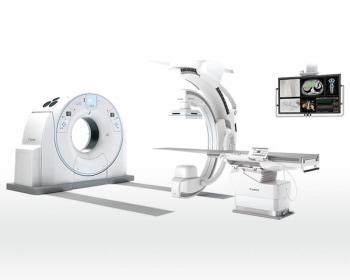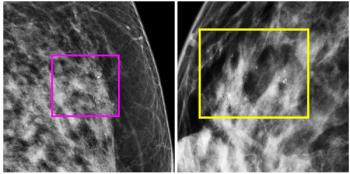
Ischiopagus Parasiticus Bipus
A 2-day-old neonate presented to pediatric emergency with gross congenital anomaly.
History: A 2-day-old neonate presented to pediatric emergency with gross congenital anomaly.
Figure 1. A 2 day old neonate was present to imaging centre with gross congenital anomaly. Clinical examination shows a case of ischiopagus parasiticus bipus and CT was advised for internal anatomy of both babies and to delineate sharing viscera.
Figure 2. Saggital CT scan images of concerned area: (Arrow: part of pelvic bone in parasiticus neonate.)
Figure 3. Axial CT images through area of concern showing bladder and bowel sharing by both baby. (Arrow: bladder sharing by both baby.)
Figure 4. Coronal CT Image of the case showing continuation of iliac vessels in parasiticus baby. (Arrow: blood vessels in the parasiticus baby are the continuation of internal iliac vessels of live baby.)
Diagnosis: Ischiopagus parasiticus bipus
Findings: There is presence of a large parasiticus baby attached from lower part of sacrum with few bony structures that seem to be pelvic bone with attached limb and rib cage. Few bowel-like structures and one large cystic structure is identified in parasiticus baby. Urinary bladder and rectum seems to be communicated with parasiticus baby with no evidence of anal canal and urethral opening in parasiticus baby. Both internal iliac arteries seem to be supplying the parasiticus baby. Spine and brain tissue was not identified in parasiticus baby.
Discussion: Ischiopagus parasiticus bipus is rare variety of ischiopagi where asymmetric and parasitic conjoined twins are consisting of an incomplete twin attached to the fully developed body of the co-twin. Conjoined twins itself is rare anomaly and out of which ischiopagus parasiticus is even less common.
CT scan shows a healthy looking complete baby with the ischium part connected with another incomplete twin of his one limb, rib cage, few bowel-like structures clearly visible. Urinary bladder and bowel seem to be shared by both babies with unidentified anal canal and urethral opening. Both internal iliac arteries was seems to be supplying both baby.
Ischiopagi is the medical term used for conjoined twins (Class V) united at the pelvis. It specifically describes a condition involving the fused lower half of the two bodies, with spines conjoined end-to-end at a 180-degree angle. Ischiopagic twins have four arms; two, three or four legs; and typically one external genitalia and anus.
Ischiopagus is a rare anomaly occurring in about one and every 100,000 live births. It occurs when a single monozygotic ovum's embryonic disc incompletely divides more than 13 days after fertilization. If the embryo undergoes twinning after 17 days, the separation of the twins does not happen. These children are mostly born stillborn or prematurely. The twins usually share one bladder, one abdomen, and one pelvis fused with two vertebral columns. However, there are different instances of ischiopagus, but the twins are always joined at the hip. Treatment in such baby is surgical resection of the parasitic part.
M.T. Makada MD, N.U. Bahri, MD, Madan Mohan Gupta, resident, and Nilesh Makwana, resident
Department of Radiodiagnosis, M.P.Shah Medical College,
Jamnagar, Gujarat, India
Newsletter
Stay at the forefront of radiology with the Diagnostic Imaging newsletter, delivering the latest news, clinical insights, and imaging advancements for today’s radiologists.



























